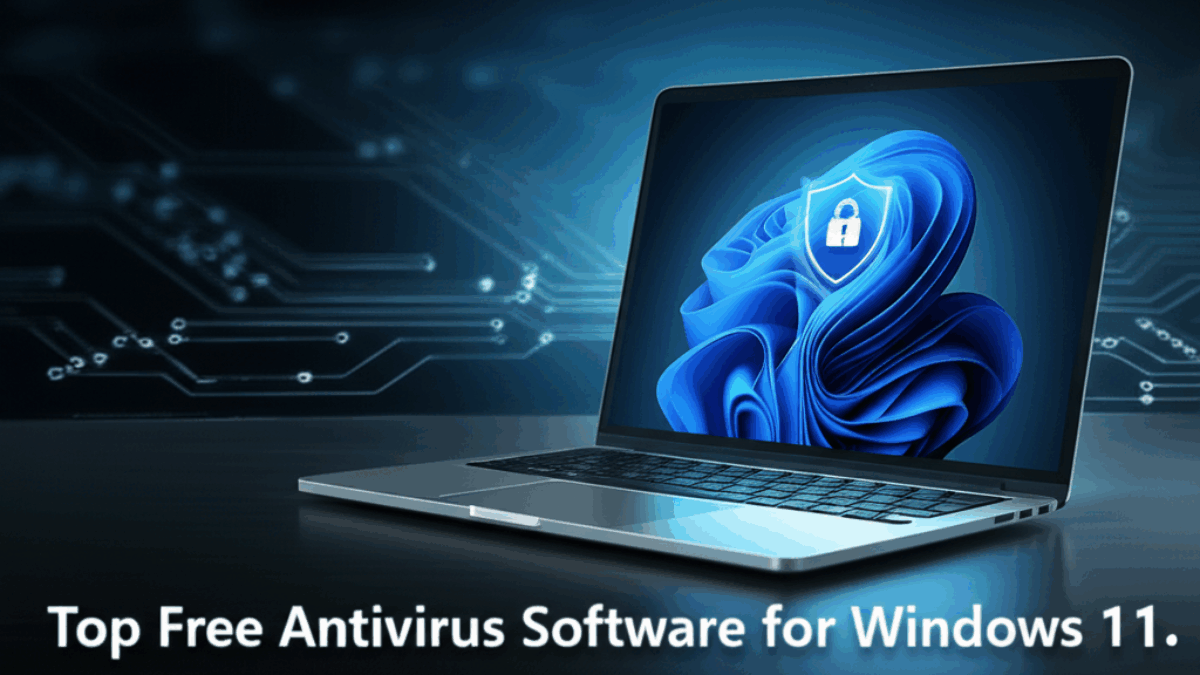Introduction
In today’s digital age, protecting your computer against viruses and malware is more important than ever. Windows 11, like its predecessors, can be susceptible to cyber threats that can compromise your personal information, damage your system, and lead to financial loss. With the prevalence of various online threats, investing in reliable antivirus software is a crucial step for every user. However, this doesn’t mean you have to break the bank on expensive antivirus solutions.
This guide aims to help you navigate the world of free antivirus software that works seamlessly with Windows 11, ensuring your system stays secure. Whether you’re a beginner looking for simple protection or a more experienced user wanting to tweak settings for optimal performance, this article offers step-by-step instructions, common issues, and helpful alternatives.
Step-by-Step Guide to Finding the Right Free Antivirus Solution
Step 1: Understanding Your Needs
Before diving into the various free antivirus options, it’s essential to understand what you need. Ask yourself:
- What kind of files do I usually download or share?
- Do I frequently browse the web or use public Wi-Fi?
- Am I looking for basic protection or more advanced features like a firewall or phishing protection?
Step 2: Exploring Top Free Antivirus Software for Windows 11
Below are some of the top free antivirus software options available for Windows 11. Each option includes its key features, pros and cons, and installation instructions.
1. Windows Defender (Microsoft Defender Antivirus)
Features:
- Real-time protection
- Built-in firewall
- Cloud-delivered protection
- Parental controls
Pros:
- Free and already integrated into Windows 11
- Minimal impact on system performance
- Regular updates directly from Microsoft
Cons:
- Lacks some advanced features found in third-party programs
Installation Instructions:
Windows Defender comes preinstalled with Windows 11. Simply ensure it’s enabled:
- Go to Settings.
- Click on Privacy & security.
- Click on Windows Security and ensure all features are active.
2. Avast Free Antivirus
Features:
- Real-time scanning
- Behavior shield for suspicious activity
- Wi-Fi inspector
Pros:
- User-friendly interface
- Regular updates
- Offers additional security tools
Cons:
- Ads for the premium version
- Can slow down older PCs
Installation Instructions:
- Go to the Avast website.
- Click on Free Download.
- Run the installer and follow the instructions.
- Restart your computer to complete the installation.
3. AVG AntiVirus Free
Features:
- Real-time performance monitoring
- Malware and ransomware protection
- Email protection
Pros:
- Comprehensive scanning options
- Functions well with other software
Cons:
- Limited customer support
- Frequent upgrade prompts
Installation Instructions:
- Visit the AVG website.
- Click on Free Download.
- Execute the downloaded file and follow the instructions.
4. Bitdefender Antivirus Free Edition
Features:
- Antivirus protection against known threats
- Anti-phishing protection
- Minimal resource usage
Pros:
- Fast scanning
- Low resource usage
Cons:
- Limited features compared to the paid version
- Requires a Bitdefender account to activate
Installation Instructions:
- Go to the Bitdefender website.
- Select Free Download.
- Install and set up with a Bitdefender account.
5. Kaspersky Security Cloud Free
Features:
- Real-time antivirus protection
- Application control
- Cloud-based features
Pros:
- Frequent updates
- Covers multiple devices with one account
Cons:
- Limited features in the free version
- Heavy software
Installation Instructions:
- Navigate to the Kaspersky website.
- Click on Download Free.
- Open the installer and follow the prompts.
Step 3: Configuring Your Free Antivirus
Once you’ve chosen an antivirus, you’ll want to configure it correctly to maximize your protection. Here’s how:
Customizing Basic Settings
-
Open Your Antivirus Software:
Launch the software you have installed by double-clicking on the icon in the system tray or from the Start menu. -
Configure Scanning Options:
Most antivirus software allows you to schedule scans. Set it to run at a time when you are not using the computer:- Real-time scanning: Keep this enabled.
- Scheduled scans: Set for weekly or bi-weekly.
- Enable Firewall:
Make sure the built-in firewall is turned on:- Navigate to the firewall section in your antivirus settings.
- Ensure it’s enabled to add an extra layer of protection.
Step 4: Regularly Update Your Antivirus Software
Keeping your antivirus updated is crucial. Most antivirus programs will update automatically, but it’s good practice to check regularly:
- Open Your Antivirus Software.
- Go to the Settings tab.
- Click on Update or Check for updates.
Step 5: Testing Your Antivirus Protection
It’s wise to test whether your antivirus is working properly:
- Visit a testing site like EICAR.com that provides a safe test file.
- Download the test file and see if your antivirus detects it.
If your antivirus doesn’t flag it, revisit your configuration settings.
Common Errors and Quick Fixes
While using free antivirus software, users often encounter common issues. Here are a few and how to fix them:
Error 1: Antivirus Not Updating
Fix:
- Open your antivirus software.
- Go to the Settings and find the Update section.
- Make sure your internet connection is stable. Attempt to update again or reinstall the software.
Error 2: Conflicts with Other Security Software
Fix:
- Ensure you’re running only one antivirus program at a time to avoid conflicts.
- Uninstall any other security software through the Control Panel > Programs > Uninstall a program.
Error 3: Software Slowing Down System
Fix:
- Check for unnecessary background running processes in your antivirus settings.
- Consider disabling features you don’t need or scheduling scans during off hours.
Advanced Tweaks for Power Users
For those who know their way around computers, there are advanced tweaks you can apply to enhance your antivirus setup:
-
Modifying Scan Settings:
Set custom scan profiles that only scan specific files or folders. This can save time and resources. -
Exclusions List:
If you find your antivirus blocking files incorrectly, add these files to the exclusion list to prevent future hassles. - Firewall Custom Rules:
If your antivirus includes a firewall, create custom rules for applications that require internet access but aren’t necessarily trustworthy.
Final Summary Checklist
Quick Reference Checklist
- [ ] Choose a suitable free antivirus software from the list above.
- [ ] Install and configure the antivirus settings.
- [ ] Enable and schedule regular scans.
- [ ] Regularly check for and install updates.
- [ ] Test the antivirus using safe test files.
- [ ] Address common issues and apply quick fixes as needed.
- [ ] Explore and implement advanced settings if comfortable.
Conclusion
By following this step-by-step guide, you can confidently select the right free antivirus software for your Windows 11 system without compromising your budget or security. Keeping your system protected doesn’t have to be a complicated process. With the proper tools and a proactive mindset, you can enjoy a secure computing experience. Remember to stay informed about potential threats and keep your antivirus updated for optimal performance. Happy computing!

